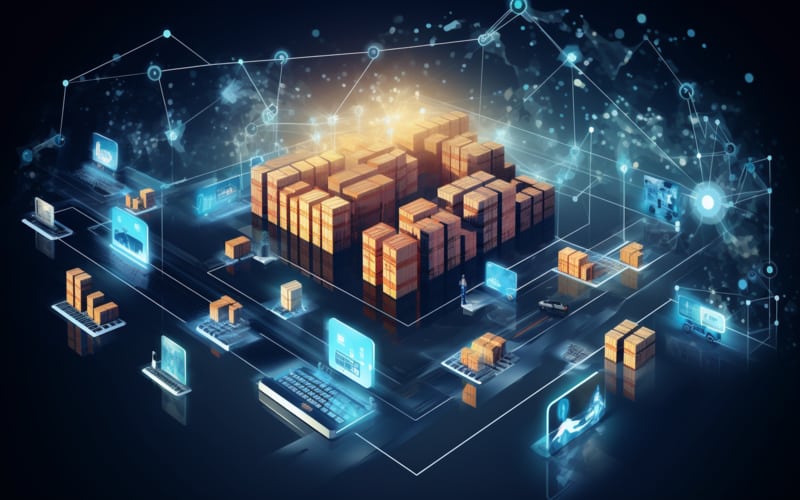SAP Tm Interview Questions
SAP Tm interview questions and answers are here to assist you with preparations for an upcoming interview. SAM Tm, is an integral role within the tech industry that blends technical know-how with marketing skills to effectively convey product value to prospective customers.
Here we explore some of the most frequently encountered SAP tm interview questions and answers – let’s dive right in and begin exploring!

1.What is the purpose of the organizational structure in a business organization?
The organization structure in a business organization is essential for mapping business functions to the SAP landscape, creating models applicable to analytical, geographic, or organizational boundaries, and ensuring smooth operations.
2.Discuss the two components of the organization structure?
The two components of the organization structure are the internal lock structure and the master data component.
3.Mention about the transportation management configuration part of SAPCC?
The transportation management configuration part of SAPCC is divided into several options for customization and configuration.
It includes the defined number and intervals, item type, item time, stage types, moment types, number edges and template number edges, state template number edges, number edge interval, default shipping type, traffic duration, and stage determinants.
By understanding these options, users can better manage their transportation system effectively.
4.What is the purpose of this transportation management system?
The purpose of this transportation management system is to manage the transportation of goods from one location to another.
The system includes configurations and customization options for the main carriage, pick-up carriage, and on-carriage stages, as well as freight unit building rules and trade unit definitions.
The system also includes general settings and dangerous goods profiles.
5.Explain the importance of understanding the configurations and customization options in this transportation management system?
Understanding the configurations and customization options in this transportation management system is important in order to effectively manage the transportation of goods.
This includes being aware of the different stage types, movement types, and shipping modes, as well as the freight unit building rules and trade unit definitions
6.What is the message log in the context of SAPCC?
The message log shows whether the document has been successfully processed or not. It is important for understanding the document flow and planning of the shipment.
7.Define printing error in the context of SAPCC?
A printing error in the log indicates that the print profile for forwarding order was not set up correctly.
It is important to note that printing is necessary for understanding the shipment’s progress and providing necessary documentation.
8.What is the purpose of the Tm system?
Tm is a system used for managing logistics within an organization. It has three units: procurement, selling, and transportation.
9.Mention the importance of maintaining address data, company code, and client level information in Tm?
Maintaining this information is essential for efficient communication and coordination within the organization.
10.Discuss the default currency for data in Tm based on?
The default currency for data in Tm is based on the country code. However, it is recommended to specify the currency for better accuracy.
11.Tell about the document currency used for in Tm?
The document currency is used for payment to carriers and hours, as well as for human resource transactions.
12.Discuss the process of creating a purchasing group in Tm?
To create a purchasing group in Tm, select the company and click the “create” button.
The purchasing group will be linked to the organizational unit and the purchasing number will be a dummy name.
The org data will automatically create an org ID, which can be used or overwritten with an external ID.
13.What is the difference between centralized and decentralized purchasing in Tm?
Centralized purchasing allows for a control tower setup and better coordination between different entities, while decentralized purchasing allows for more flexibility and customization.
14.Define the purchasing loop in Tm?
The purchasing loop is a crucial aspect of a centralized procurement system, where multiple purchases can be made.
To maintain the purchasing loop, select the “Lines of a Wizard” button and click on the higher option.
Maintain the recissivity purchase loop on your own and create a business system loop.
15.Elaborate on Accelerated SAP methodology?
The Accelerated S A P methodology includes the project preparation phase, blueprinting phase, realization phase, cut-over phases, go live, and support phase.
16.What is the standard waterfall approach?
In a standard waterfall approach, the project preparation phase involves preparing for the project, deploying resources, managing activities, and estimating project timelines and resources.
17.Define therecommend gathering and blueprinting phase?
In the recommend gathering and blueprinting phase, the customer’s business processes are mapped into the SAP TM scenario.
18.What is the Agile approach to implemented solutions?
The Agile approach is a more flexible and resilient approach to implemented solutions that involves gathering and preventing phases and may come at any stage until the project goes live.

SAP TM Training

19.Tell about the SAP (Structure and Planning) phase of the Agile approach?
The SAP phase of the Agile approach involves activities like discover, prepare, run on the face, explore, prepare, and deploy, and does not have a loop in the take phase.
20.List out the difference between the explore phase and the waterfall approach?
The explore phase involves gap fit analysis to fit into the standard solution, while the waterfall approach has a loop in the take phase.
21.What is the importance of maintaining the same address in Tm?
Maintaining the same address in Tm is essential for maintaining communication with the tenure, even if there are multiple departments in a single building.
22.Define the selling part in Tm?
The selling part in Tm is mainly required if you are working as an LSP (Local Supplier Preparation) or shipper.
Understanding the target audience is essential when implementing Tm.
23.How is business partner setup handled in SAP S4 HANA landscape?
It is handled by the data migration team or SD and MMT, and enhances the role of a carrier only for TEM.
24.What is master data used for in transportation management?
It is used in various applications, including freight integration, freight out operation, and freight movement.
25.Discuss the role of a service master in transportation management?
It is needed for creating service fees and entry sheets, which need to be linked with a charge to create a service purchase order when the FSD is posted.
26.Explain the purpose of the output profile in this transportation management system?
The output profile in this transportation management system determines how information about a printing will be generated.
By default, the output profile is provided for TRQ orders, and when calling forwarding orders, it will come from the output management.
27.Mention the purpose of the dangerous goods profile in this transportation management system?
The dangerous goods profile in this transportation management system can be defined based on the type of dangerous goods being transported.
This profile may include information about the hazards associated with the goods, as well as any necessary safety precautions.
28.What is HBL in the context of transportation management?
HBL stands for House Bill of Loading Bill of Lighting. It is a number that helps track and ship products in ocean shipment

SAP TM Online Training

29.Discuss the purpose of the trade unit type in this transportation management system?
The purpose of the trade unit type in this transportation management system is to define the type of unit that will be used for transportation. This may include factors such as the size or weight of the unit.

30.What are the general settings in this transportation management system?
The general settings in this transportation management system include configurations for the forwarding order process, such as the shipping type and stage profiles, as well as the output profile and dangerous goods profiles.
Now lets get into MCQ’s!
1) What is the phase in the Agile methodology where gap fit analysis is conducted?
Run
Blueprinting
Discover
Explore
2) What is the primary purpose of S C electronic support during the hyper care period?
Training support staff
Software testing
Resolving raised tickets
Creating new solutions
3) Which approach focuses on implementing the solution in multiple countries in a single shot?
Agile approach
Waterfall approach
Big bang approach
Regression approach
4) What is the type of analysis done to ensure processes fit into the solution during the Agile approach phase?
Sizing analysis
Gap gauge analysis
Logical analysis
Gap fit analysis
5) Which app is more relevant for business users, as mentioned in the text?
Cloud app
NWBC
Standard app
Fury app
6) What is the triggering point for implementing TM in an LSP scenario?
The forwarding order
The order management level
The standard sales and delivery process
The ship or scenario
7) How are analytical, geographic, or organizational boundaries modeled in the business organization structure?
By the internal lock structure alone
Through the master data component in isolation
By mapping business functions to the SAP landscape
By strictly adhering to external SAP standards
8) What is the role of a purchasing group in the context of creating a purchase order?
Setting up pool processes in a DCC system
Triggering sales activities within the organization
Monitoring the entire purchasing process
Responsible for order management level
9) What is essential for the procurement of services in a shipper scenario?
Organization structure including sales, purchasing, and planning
Creating a company organization responsible for shipment
Differentiating purchasing for transport companies and commodity procurement
Purchasing services from the area for a cheaper price
10) What are the organization units used in different applications within SAP?
Logical systems and business system groups only
Monetary currency units and organizational entity
Component code, transportation charge management (TCM), company code
Sales organization, purchasing group, and execution organization
Summing Up!
SAP TM interviews an in-depth knowledge of its applications to transportation management, with features like transportation planning, freight cost management and shipment execution being key considerations.
Hands-on experience using SAP TM or related modules such as SAP ECC or LE-TRA could review common interview questions and practicing responses could boost confidence during this phase of preparation.
Hope these SAP Tm technical interview questions came hand in hand for your preparation Good luck!

SAP TM Course Price


Harsha Vardhani
Author